The Tallest Tower in China
- Posted 09.05.06
- NOVA
After 9/11, can engineers build a safer tall tower? The tallest skyscrapers today are built outside the U.S., as bustling economies, scarcity of land, and expanding populations have made skyscrapers a necessity. In this report by "Building on Ground Zero" producer Larry Klein, hear Leslie Robertson, the structural engineer behind New York's World Trade Center, describe the safety features of his latest project, the 1,600-foot-tall World Financial Center in Shanghai, China.
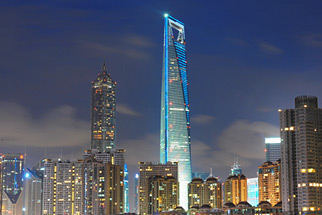 Listen
Listen
The structural engineer of New York's lost Twin Towers discusses Shanghai's soaring World Financial Center.
This feature originally appeared on the site for the NOVA program Building on Ground Zero.
Transcript
The Tallest Tower in China
Posted on: August 1, 2006
LARRY KLEIN: Since the collapse of the twin Towers on 9/11, there has been little enthusiasm for constructing very tall buildings here in America. But that's not the case overseas, especially in the big cities of Asia. In places like Shanghai, China, the economic and population pressure on land is enormous. So in this setting, a very tall building is an efficient and cost-effective way to accommodate a large number of people in a small area, with your office-mates only an elevator away.
LESLIE ROBERTSON: When you're in low rise world, you must travel horizontally, and that's slow. But in a high rise building, [snaps fingers] just like that, you go vertically up or down in the building, And you meet friends, you meet business associates, and so forth. It's a great way to live.
LARRY KLEIN: That's Leslie Robertson, the structural engineer of the World Trade Center in New York. His latest project is the World Financial Center- a 1,600-foot tower in Shanghai. Once it's finished, the multi-use structure will hold tens of thousands of people on any given day.
With that many occupants, the space will become a sort of vertical city—and like any other city, public safety in extreme emergencies will be a challenge. As 9/11 should have taught us, there are now many more threats to the safety of big buildings than just the natural ones like earthquakes and high winds.
LESLIE ROBERTSON: The project was designed for a series of unforeseen events, that we really don't know what they might be. But it's extremely robust and redundant, so that you can go to the building and take out columns, you can take out the giant diagonals, and so forth. And the building's unhappy, but it stands there even so.
LARRY KLEIN: Although the World Financial Center will be strong enough to handle extreme conditions, it's also prepared to handle the most common threat to any building—fire. If there were a major blaze and the tower needed evacuation, as we saw on 9/11, emptying more than 100 stories will take a lot of time.
So in addition to fireproofing, sprinkler systems, and protected stairwells, the World Financial Center also has special refuge floors located every 13 stories. These floors can withstand a fire for four hours or more.
LESLIE ROBERTSON: The fire stairs come down to the refuge floor. You exit out onto the refuge floor and you're protected there from fire, whether it's above you or below you. There's outside air so you don't have to be dependent on mechanical ventilation. And of course, if you wish, you can go back into the stair and continue on down. The refuge floor is a very good thing in a tall building. Pretty much everyone can either climb up or down six or eight floors. That's possible. But to come down 102 floors is almost unthinkable for a lot of people.
LARRY KLEIN: Also aiding in an evacuation will be dedicated elevators called fireman's lifts. They're located in the reinforced core of the building, and will extend the entire height of the structure to give rescuers direct access to affected floors.
After 9/11, the designers also retrofitted the express elevators in the corners of the building. They can now stop at the refuge floors and aid people evacuating.
When the World Financial Center is finished in 2008, it will be a secure building that straddles the line between safety and aesthetics. And that, to Leslie Robertson, is the ultimate goal.
LESLIE ROBERTSON: They want to be beautiful. The people in the street want to look up and say, "Hey, that's great. That's our city. We should have that." And the people who live in and work in them want to feel good when they're in there. And to me, that's the most important part. The rest of it, that's a technical issue.
OUT: For NOVA, I'm Larry Klein.
Credits
Audio
- Edited by
- David Levin
Image
- (Shanghai World Financial Center)
- © Mori Building Co., Ltd.
Related Links
-
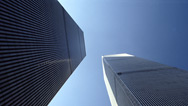
Twin Towers of Innovation
A host of engineering marvels distinguished the original World Trade Center.
-
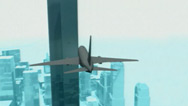
World Trade Center Collapse
Watch an expert-narrated slide show of the Twin Towers' final minutes.
-
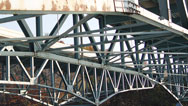
Smart Bridges
Can we engineer bridges that tell us what's wrong with them before it's too late?
-
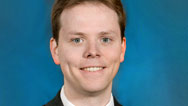
Smart Bridges: Expert Q&A
The University of Michigan's Jerome Lynch answers questions about the future for "smart" bridges, and more.
You need the Flash Player plug-in to view this content.

